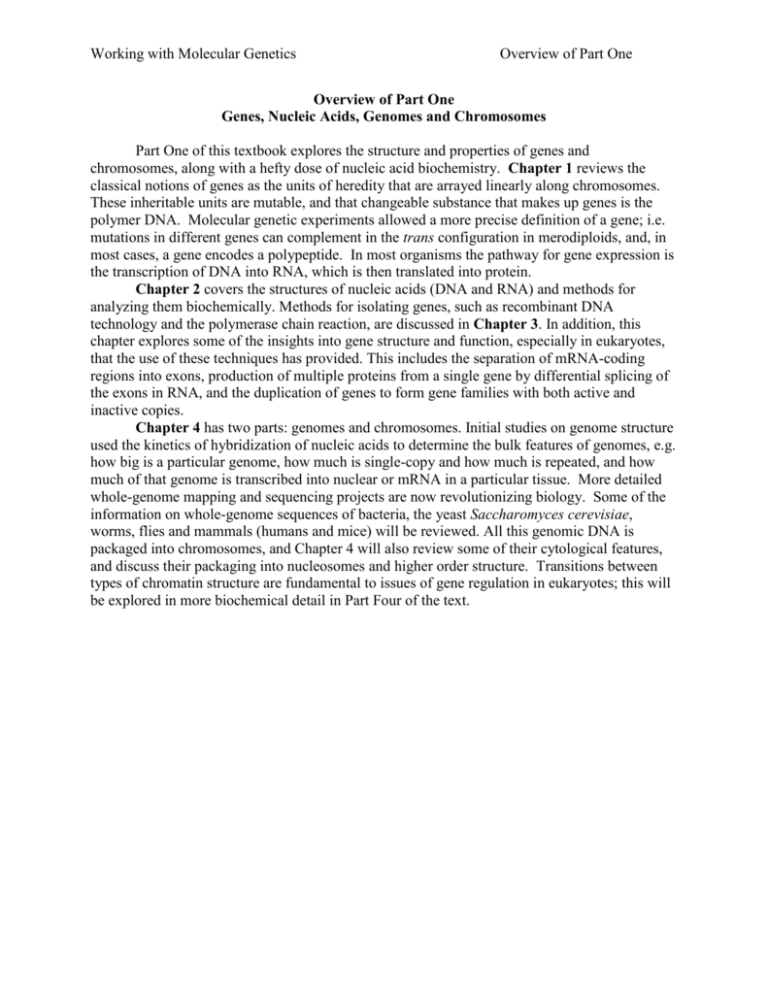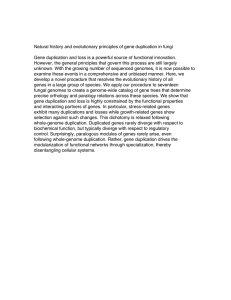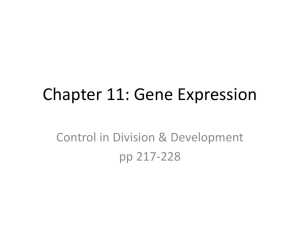PartOneOverview
advertisement

Working with Molecular Genetics Overview of Part One Overview of Part One Genes, Nucleic Acids, Genomes and Chromosomes Part One of this textbook explores the structure and properties of genes and chromosomes, along with a hefty dose of nucleic acid biochemistry. Chapter 1 reviews the classical notions of genes as the units of heredity that are arrayed linearly along chromosomes. These inheritable units are mutable, and that changeable substance that makes up genes is the polymer DNA. Molecular genetic experiments allowed a more precise definition of a gene; i.e. mutations in different genes can complement in the trans configuration in merodiploids, and, in most cases, a gene encodes a polypeptide. In most organisms the pathway for gene expression is the transcription of DNA into RNA, which is then translated into protein. Chapter 2 covers the structures of nucleic acids (DNA and RNA) and methods for analyzing them biochemically. Methods for isolating genes, such as recombinant DNA technology and the polymerase chain reaction, are discussed in Chapter 3. In addition, this chapter explores some of the insights into gene structure and function, especially in eukaryotes, that the use of these techniques has provided. This includes the separation of mRNA-coding regions into exons, production of multiple proteins from a single gene by differential splicing of the exons in RNA, and the duplication of genes to form gene families with both active and inactive copies. Chapter 4 has two parts: genomes and chromosomes. Initial studies on genome structure used the kinetics of hybridization of nucleic acids to determine the bulk features of genomes, e.g. how big is a particular genome, how much is single-copy and how much is repeated, and how much of that genome is transcribed into nuclear or mRNA in a particular tissue. More detailed whole-genome mapping and sequencing projects are now revolutionizing biology. Some of the information on whole-genome sequences of bacteria, the yeast Saccharomyces cerevisiae, worms, flies and mammals (humans and mice) will be reviewed. All this genomic DNA is packaged into chromosomes, and Chapter 4 will also review some of their cytological features, and discuss their packaging into nucleosomes and higher order structure. Transitions between types of chromatin structure are fundamental to issues of gene regulation in eukaryotes; this will be explored in more biochemical detail in Part Four of the text. Working with Molecular Genetics Overview of Part One











